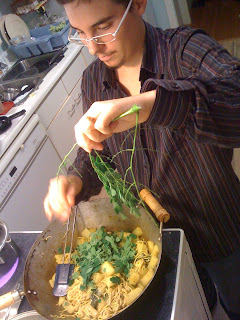 |
| Photo: Visit Cape May (Creative Commons) |
The effects of the hormone blockers are completely reversible. Nevertheless, if an FtM teenager takes them and then takes testosterone as a young adult, his female sexual organs will not mature. I don't know if they would ever mature if he stopped taking the testosterone some years later. Testosterone use in FtM trans guys who transitioned after puberty can cause female sex organs to atrophy, and may also result in polycystic ovary syndrome (PCOS), which can lead to permanent infertility. I haven't been able to find good information concerning its effect on individuals who used hormone blockers and never produced natal hormones.
If I'd known about hormone blockers and the possibility of transitioning earlier in my life, would I have done so? I don't know. I didn't have the social supports necessary for transition at that time. It's hard to separate such a support system from an individual's emotional readiness. I wonder if I may have been much happier earlier in my life if I'd been able to transition as a teenager. I don't know if the choice would have been as clear for me at age 12 or 14 as it was at 23.
If you had asked me when I was ten years old if I thought I would ever want to birth a baby, or even adopt one, I would have for sure said no. At age twenty and even twenty-four, I would have still said no. Nobody asked me. When discussing transition, I don't remember being asked by my therapist, family doctor or endocrinologist if I thought I ever would want to have kids. My surgeon definitely didn't talk to me about future breastfeeding. I'm guessing that most trans people and their health care providers assume that infertility is the price we pay for transitioning. Recently, some people have accused me of wanting to "have it all" – meaning the correct gender identity and my child. Well, isn't that what most others can enjoy?
I didn't contemplate having a relationship and a family until after I'd taken testosterone and had top surgery. I wasn't content enough before that to have any inkling of what I really wanted in that regard. Now, my son and my husband are the most precious parts of my life.
Do I think that trans kids shouldn't take hormone blockers so that they can maintain their reproductive potential? Do I think they shouldn't transition at a young age? No and no. Each individual has to make his or her own decision. Others can guess at how badly someone needs to transition and when, but only the person contemplating transition can really know. Some trans kids suffer from such severe gender dysphoria that they are depressed and even suicidal. These children often feel that they need to transition as soon as possible. Others, like I was, can kind of manage by keeping very busy and not being terribly self-aware – they might not need to transition as urgently.
Sometimes I wish that I could wake up in the morning with a physiologically male body, but I would never trade my baby for anything. Most of the time, I enjoy traveling my unique path. I am comfortable enough with my male-sounding voice, my beard, and my flat chest. The parts of me that I don't love so much are what helped to make the family I love so deeply. This is my conundrum.


